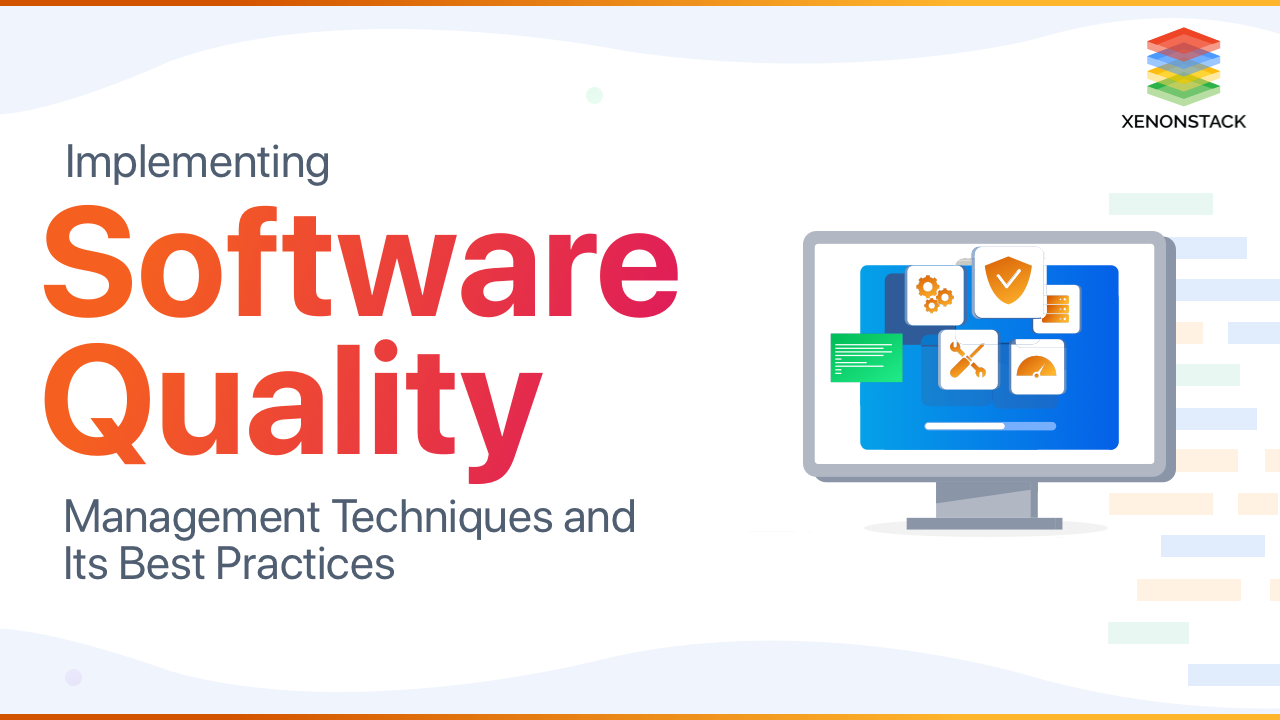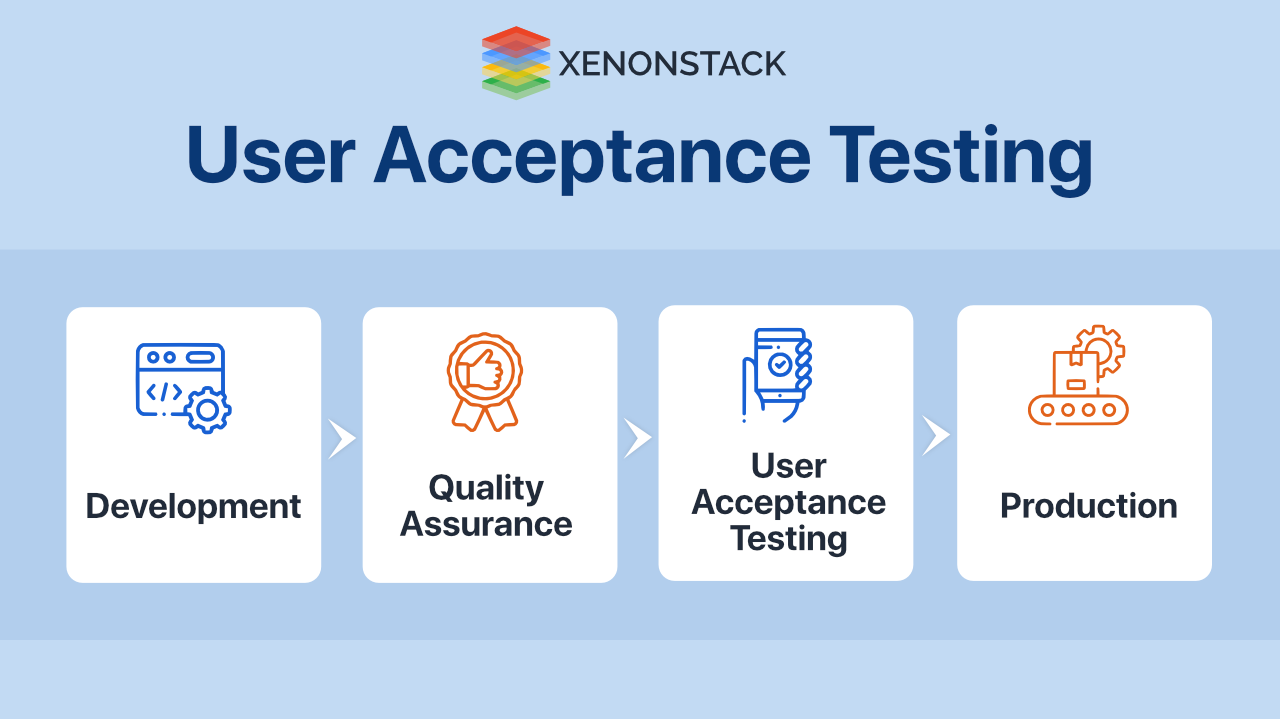
What is Software Quality?
Software Quality is the degree to which the correct software is produced. Quality software is reasonably bug or defects-free, delivered on time and within budget, meets requirements and expectations, and is maintainable. Standard ISO 8402-1986 defines quality as “the totality of characteristics and features of a product or service that bears its ability to implied needs or Satisfy stated.” In the original view, quality is hard to describe but can be recognized if it is present.
A process to check the system accepts the requirements of a user or not. Click to explore about, User Acceptance Testing
-
In the user view, quality is fitness for purpose or meeting the user’s needs.
-
In the manufacturing view, quality means conformance to process standards.
Key aspects of quality for the customer are
-
Aesthetic design and feel
-
Durability and longevity
-
Consistent performance
-
Reliability with minimal failures
-
Effective functionality
-
Responsive after-sales support
-
Value relative to cost
How does Software Quality Management work?
Software quality management activities are generally divided into three core components: quality assurance, quality planning, and quality control.
Quality Assurance
Set up an organized and logical set of organizational processes, deciding on software development standards paired with regulatory processes, a better chance to produce high-quality software.
This stage can include
-
Identifying standards, if any, used in software development processes.
-
To conduct conventional processes, such as quality reviews.
-
Perform in-process test data recording procedures.
-
Encouraging documentation process standards.
Quality Planning
Quality planning defines the quality attributes associated with the project's output. How are those attributes assessed? Characteristics such as "robustness," "accessibility," and "modularity" are attached to the software development project. The quality plan may also address the intended market, critical release dates, quality goals, expected risks, and risk management policy.
Quality Control
The quality control team tests and reviews software to ensure quality assurance processes and standards at the organizational and project levels. In software development firms implementing the agile quality approach, switching to Agile methods from a more formal quality management structure creates problems if control procedures aren't appropriately adapted.
Activities include
-
A follow-up review of software to ensure any required changes detailed in the previous testing are addressed.
-
Release testing of software with proper documentation of the testing process
-
Apply software measurement and metrics for assessment.
-
Examine software and associated documentation for non-conformance with standards.
An approach which consolidates test first driven methodology and refactoring. Click to explore about, Golang Unit Testing
Benefits of Software Quality Management
Some of the benefits of Software quality are -
-
Increased productivity of the development team.
-
Improved Product Quality - Test statistics and defect tracking are more precise and up-to-date.
-
Decreased re-work costs are achieved by detecting defects earlier in the software project development life cycle at every stage.
-
Increased confidence levels in existing product management and future product development.
-
Increased credibility as the software produced will be highly qualitative.
-
Saves Money.
-
Inspires Client Confidence.
-
Maintains Great User Experience.
-
Brings In More Profit.
-
Boosts Customer Satisfaction.
Why is Software Quality Management important?
Software quality must be a requirement for a successful business that develops software—it cannot be an exception. Consider the ways it can impact the business.
Predictability
Software quality drives predictability. Predictability decreases as rework grows and lower-quality products increase. Do it once and for all, and there will be less variation in productivity, less rework, and better overall performance. Products get delivered on time. Poor quality is hugely more difficult to manage.
Reputation
A significant, solid reputation is hard to establish and easy to lose, but when the company has it, it’s a powerful business driver. A few mistakes and fame can be gone, creating significant obstacles to sales and your bottom line.
Team member Morale
The happiest and most productive employees take pride in their work. Enabling employees to build software will drive a higher level of productivity and morale. Inferior products, lots of rework, unhappy customers, and difficulty meeting deadlines have the opposite effect, leading to a less productive workforce and high turnover.
Customer Satisfaction
A quality product satisfies the customer, who comes back and provides positive referrals. Customer loyalty is heavily driven by the quality of the software produced and the service offered. Positive references can spread quickly with social media channels such as Facebook and Twitter. Poor quality and dissatisfaction can also be communicated rapidly, if not quicker, than good ones.
Bottom Line
Predictable and productive performance, happy employees, a stellar reputation, and satisfied customers are the formula for a successful software business. It all drives the bottom line. Quality impacts various areas of software development projects.
How to adopt Software Quality Management?
Lowering the cost of testing and improving the quality of software is essential. These four points will help enhance software quality and improve testing efficiency.
Test at the right time
By testing earlier, we will be able to detect and solve defects rather than having to resolve them at the end of the process. The software bugs identified, the longer and more expensive they are to fix. We involved testers during the requirements and design so they could help formulate a more useful framework. More than 70 per cent of issues in a live environment can be traced back to poor conditions.
Improve testing organization
Implement specific policies to direct a consistent approach, such as using repeatable industry-standard testing processes and training testers within this framework.
Innovation leads to improvement
Do not get stuck in the same old routine – embrace new approaches.
Keep reviewing
Just because specific methods have worked in the past doesn’t mean they always will. Evaluation and refactoring processes allow the testing team to maximize efficiency by reviewing what worked well. Implement a Cause analysis process that distinguishes whether issues were a ‘testing miss,’ a ‘development miss,’ or a ‘requirements or design miss.’ Identify areas for improvement throughout the whole software development process.
Best Practices of Software Quality Management
Let’s list out the best practices for Software Quality -
Measure the Importance of Quality and Plan QA Process
An initial step to prevent future programming errors. Plan for the development approach, high-quality design and code needs the involvement of the QA team. To avoid the failure of the end product's quality, the QA process's input and output need to be well-defined, planned and documented.
Analyze Quality Benchmarks
Requirements gathering is an essential part of the development cycle and quality assurance. Everything includes the application features, design, functionalities, scalability, reliability, efficiency, usability, etc., to check whether the application will meet the quality benchmarks.
Adopt ‘Test Early Test Often’ Principle
An initial step to prevent future programming errors. Plan for the development approach, high-quality design and code needs the involvement of the QA team. To avoid the failure of the end product's quality, the QA process's input and output need to be well-defined, planned and documented. We are adopting an agile development approach for faster, higher-quality application releases. Hence, it becomes essential for the QA teams to ensure that development efforts are not dumped. The “Test Early, Test Often” principle will help the QA teams find bugs early and often to confirm continuous delivery.
Merge QA & Development Efforts with DevOps
Merging operations, development, and testing processes with DevOps is highly recommended to ensure continuous improvement in the end application.
Engage in Continuous Testing
It continuously tests each (even minor) build to check its success. If not, we can quickly identify it on time, make necessary changes, and again take it into the testing process. This is a process that all QA teams across the globe need to adopt for continuous delivery of the end product. Continuous testing can be automated.
Utilize Ready-Made Test Frameworks
Utilizing ready-made testing frameworks is better. This helps the QA teams appropriately manage end-to-end testing cycles and ensure continuous integrations and deliveries.
Some more best practices are
-
Deploy Automated Testing
-
Choose the Right Test Automation Tool
-
Report Bugs Effectively
-
Become a QA Detective
-
Check for the Available Resources
-
Allocate Time Appropriately
-
Ensure Management Transparency
-
Update Yourself with Market Trends
-
Share Knowledge Extensively
-
Always Offer Feedback
-
Get Prepared for the Challenges
-
Hire Dedicated QA teams
A rising technique to complete almost everyone's dream of watching Development, Operations, and Quality Assurance work together to discover more valuable and time-efficient products. Click to explore about, TestOps Best Practises
Key Software Quality Management Tools
New and updated tools continue to proliferate across the software quality spectrum with expanding options in Testing Automation, Performance Testing, Mobile testing, Niche testing, bug tracking and more. Here are some of my favourite software quality tools
-
Selenium (Web Application Testing)
-
Robot Framework (Acceptance Testing)
-
Appium (Mobile Testing)
-
JMeter (Load Testing)
-
Jenkins (Continuous Testing)
-
Postman/Robot framework (API Testing)
-
Firebug / Firepath (Online Debugging)
-
GitLab (Project & Source Code Hosting)
-
Trello, Wekan board (Defect Tracking & Collaboration)
-
UI Automator (Galen Framework)
-
Pycharm, Eclipse (Source code Editor), etc.
Integrated Software Quality Strategy: A Comprehensive Perspective
In this insight, we have revealed several aspects that show the nature of any application, including reliability and the rate of its delivery. High-standard software results from comprehensively testing the main drivers of software quality and using test metrics to ensure the testing purposes are sufficient. However, if you plan to check your software quality for better software enhancement.
Next Steps in Software Quality Management Techniques
Discuss with our experts about the implementation of compound AI systems and how industries and different departments leverage Decision Intelligence to become decision-centric. By utilizing AI, they can automate and optimize IT support and operations, significantly enhancing efficiency and responsiveness through software quality management techniques.


